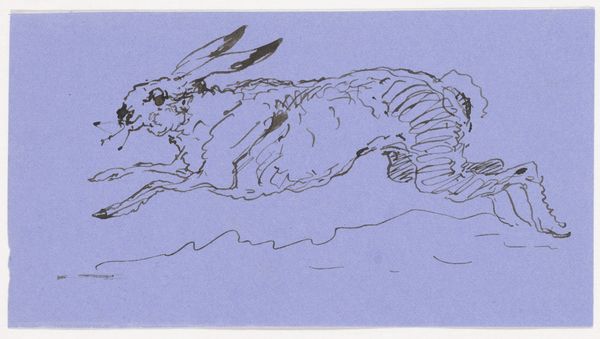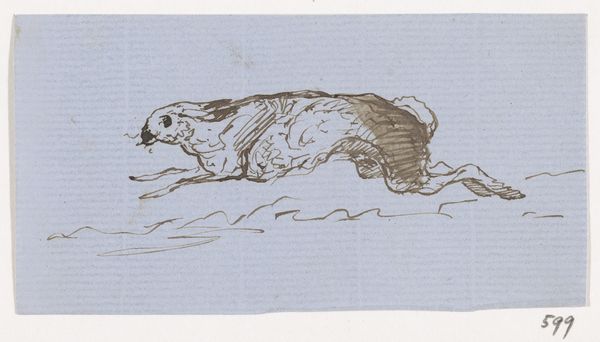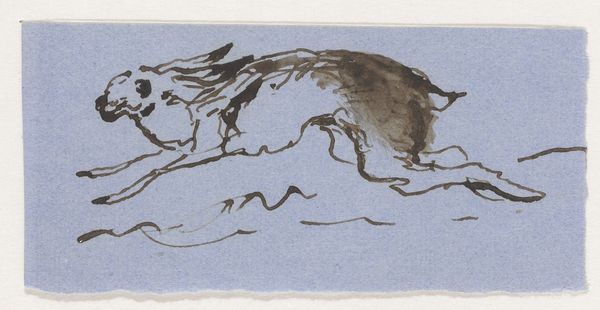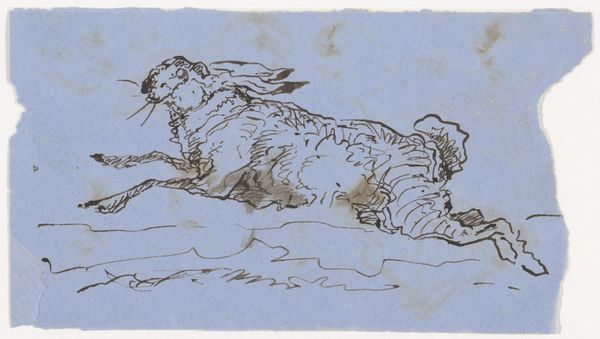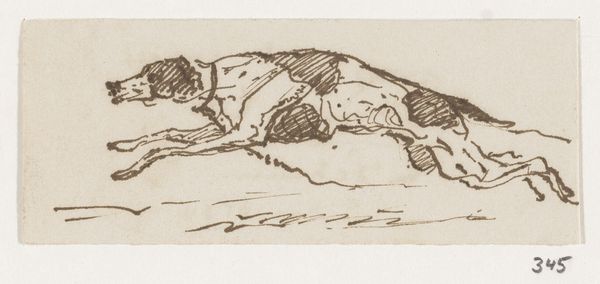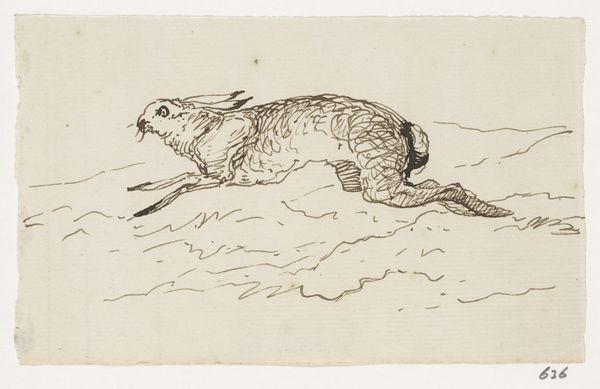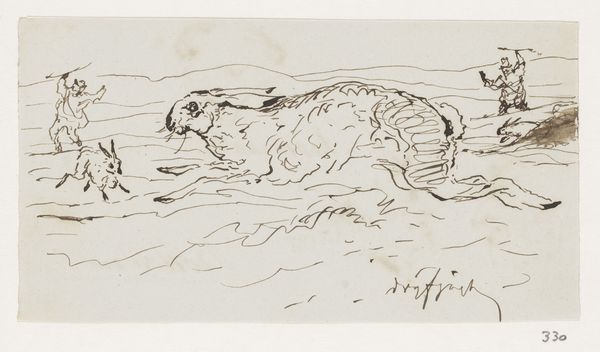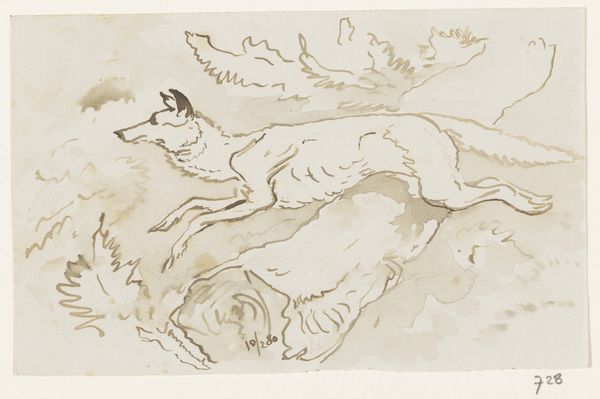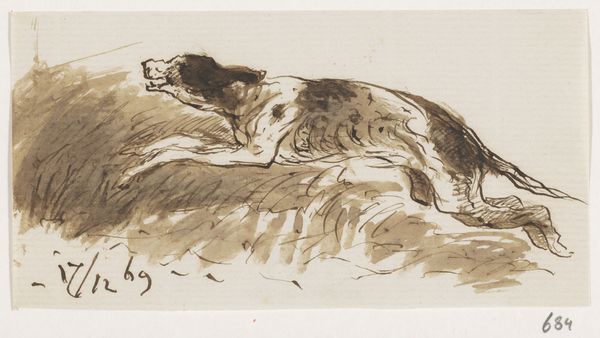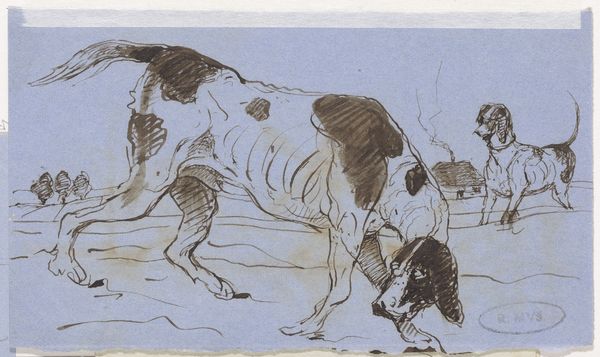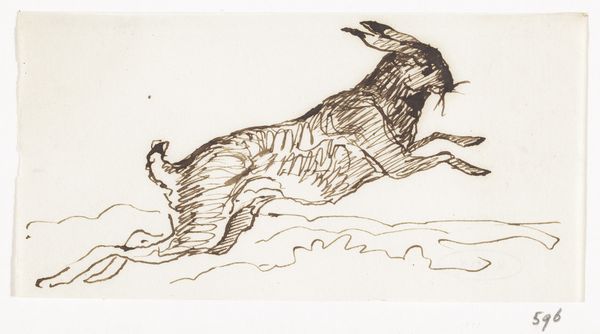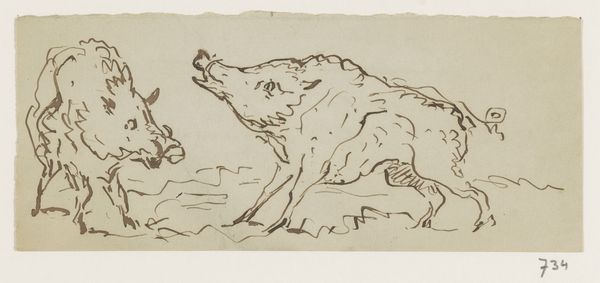
drawing, ink
#
drawing
#
animal
#
landscape
#
ink
Dimensions: height 70 mm, width 130 mm
Copyright: Rijks Museum: Open Domain
Curator: Let's discuss this charming drawing titled "Haas" by Johannes Tavenraat. It's rendered in ink and dates roughly from 1840 to 1880, and it now resides here at the Rijksmuseum. Editor: Immediately, I’m struck by its simplicity, yet there's such dynamism in the line work. You can feel the hare’s movement. Curator: Precisely! The seemingly effortless strokes convey a sense of urgency. Landscape art of this period often served as documentation, a means of cataloging the natural world under evolving colonial power structures. Tavenraat departs from such formal conventions. Editor: How so? Curator: By focusing on a single, small creature, Tavenraat is shifting the focus from the macro to the micro, if you will. There’s an emphasis on individual experience here. Editor: It prompts me to consider ideas about ecological vulnerability and fragility. The hare, rendered so vividly in motion, embodies survival, resilience, which reminds me of current dialogues around extinction. Does the sketch elevate the status of the subject by virtue of simply being drawn? Curator: I agree entirely, this animal is depicted without overt symbolism. Rather than being an allegorical figure, it’s an animal existing and moving within the landscape. The lines articulate light and texture as the animal is running, bringing together the ephemeral with grounded realism. It speaks of nature being observed. Editor: I wonder what the role of drawings was perceived to be during that period. In preliminary sketching, one is in conversation with their subject. You consider questions of composition and emotion when creating the piece; ultimately, with drawing one must capture the "soul" of what is at hand. Curator: Exactly. It provides a study into an ecosystem at that time; how people interact with animals is such an ongoing concern that deserves continual observation. Editor: Thank you; your knowledge of historical contexts illuminates so much within this drawing. It’s fascinating to situate Tavenraat's focus within those colonial-era paradigms, which informs the artistic dialogue as a whole. Curator: My pleasure. I hope our conversation encouraged a deeper connection with this seemingly simple but profound sketch.
Comments
No comments
Be the first to comment and join the conversation on the ultimate creative platform.
